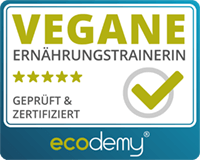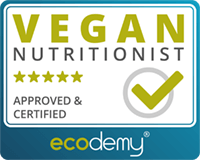Achieving Your Protein Goals As A Vegan. Part II
Is it possible to eat entirely plant-based and get the right amount and quality of proteins? — Insight of a vegan nutrition trainer

Visit activeplantbased for professional help and plant-based nutrition training.
Everyone, especially athletes and those who keep active, must ensure they meet their daily needs for macros. Macros are carbohydrates, proteins and healthy fats. In this blog, we’re focusing on protein.
Key points
- It is perfectly possible to cover your protein needs while eating plant-based in both amount and quality (amino acid profile); You’ll need to plan, as always.
- Plant protein might be superior in terms of health, studies claim.
- Plant-based sources are available for hypercaloric, hypocaloric, and isocaloric approaches. Explaining: hyper, hypo and isocaloric
- Plant-based proteins contain extremely little cholesterol compared to animal proteins, preventing common cholesterol-related diseases.
- Getting creative is an essential part of the plant-based kitchen.
- The first meal of the day should be a high-protein, moderately-fat and low-(refined)-sugar breakfast to not cause a sugar spike following an energy dump later
- Meet your carbohydrate and fat needs, as they are crucial for maintaining your energy levels, performance, physical and cognitive health.
- Protein intake and calorie intake are a game of ratios. Keep track of the numbers.
What are the benefits of plant-based proteins?
- Very little cholesterol (Yes, some plants contain cholesterol)
- Fibres for gut health and saturation
- Antioxidants
- Phytochemicals
- Vitamins
- Minerals
Plant-based protein sources for a hypercaloric diet
Here is a list of plant-based foods high in protein that might help you increase your daily intake:

As you can see here, some vegan foods contain more protein calories per gram than others.
Note that this list is 2065 kcals already without e. g. a topping for your brown bread. These could build the basis for some of your meals, assuming you have an intake of more than 2000 kcals.
Eating fewer amounts of the foods mentioned above will also result in a reduction of calories, logically.
Some ideas
Oat flakes taste incredible with water or milk and some dried fruits, nuts, and berries.
Optionally, you could make pancakes with ground oat flakes and add pea/rice protein.
100g tofu can easily be eaten with brown bread or as a side to the rice.
Tofu fits everything, whether it is noodles, soups, or simply oven baked.
500g broccoli might sound like a lot at first. After cooking, draining, and blending it into a thick and tasty cream, it might serve as a rich and delicious green pasta sauce.
It could also be an idea to use a little bit of it for a green smoothie or simply oven-baking some parts. The options here are endless.
With the lentils and quinoa, one could make a tabbouleh, like a salad, and add fresh dill, cucumber, tomatoes, vegan yoghurt, and lemon.
Having a plan
With some planning, it can be easy to cover your protein needs without surpassing or undersupplying your daily calories.
We need to plan, as an athlete usually does anyway, and get an understanding of how dense certain foods are with protein or calories.
As always, practice and learn about the ingredients you use. After some time, you’ll feel what plant-based sources work best for you.

What should I eat for breakfast?
For the first meal of the day, I recommend a high-protein, rather-high-fat and low-(refined)-sugar breakfast not to cause a sugar spike following an energy dump. The fat should come from a whole food source, like nuts, avocadoes, etc., and not from refined oil.
Instead of a chocolate croissant and coffee with vegan cream and sugar, you might opt for wholemeal bread with e. g. avocado, tomato, and seeds on top, plus a coffee with e. g. almond milk instead.
We now know that people can meet their protein requirements while balancing carbs and fats consumption.
Are plant proteins worse than animal proteins?
There is a never-ending ramble about bioavailability and how plant protein quality is worse than animal sources. Let’s have a look at overall health first.
How do different sources of proteins affect our health?
This is what two studies from the Journal of the American Heart Association and the Journal of American Medical Association said;
- “[…] higher intake of animal protein was associated with higher cardiovascular mortality, and higher intake of plant protein was associated with lower mortality, […].”
- “Higher plant protein intake and substitution of animal protein with plant protein were associated with lower risk of all‐cause mortality, cardiovascular disease mortality, and dementia mortality.”
The 2016 study above points out that using plant-based protein sources leads to lower death rates, while animal protein leads to higher death rates due to cardiovascular (heart and blood vessel) diseases.
The 2021 study confirms what the 2016 study claims. Here, plant-based protein sources are associated with both lower all-cause death and death due to dementia and cardiovascular disease, again.
On the other hand, animal proteins like processed red meat and eggs were associated with higher all-cause death.
Now let’s talk about quality
When we say protein quality, we talk about a different type of quality.
Here, it doesn’t mean that plant protein is worse; qualitatively speaking, it just means it is incomplete or lacking (most of the time) one of the 8 (or 9) essential amino acids.
Isn’t that bad news?
No :) We simply have to combine our plant-based sources to get a complete profile. It means we need to eat the rainbow.
And that is no magic; we do it naturally. Who, after all, eats plain rice and calls it a day?

Combining
Combining beans with rice and corn, e. g. in a tortilla or chili sin carne, gives us a perfect protein profile.
Eating the rainbow and combining different sources don’t just complete our protein profile; they also increase absorption of various vitamins and provide more minerals, phytochemicals and antioxidants while protecting our cardiovascular system.
Do complete protein profiles exist in plants?
Quinoa, for instance, is a complete protein source, as it contains all essential amino acids.
Soy bean also contains all essential aminoacids.
Can’t I just eat quinoa or soy, then?
No, because although quinoa and soy do have all the essential amino acids you need, it does not have enough protein per kcal to cover your daily needs.
Example:
100 grams of cooked quinoa contain about 4.4 grams of protein and 120 kcals. So if you wanted to have 100 grams of protein per day, you would need to eat more than two kilograms of quinoa. Oh, and you would have reached 2640 kcals, too.
Digestively speaking, it probably does not work, even if you enjoyed eating 2 kilograms of grains. And then, quinoa does not contain all the healthy fats, vitamins, phytochemicals and minerals you need, so you would be well over 3000 kcals until you get what you need.
Instead, eat the rainbow, combine, fusion and enjoy a green kitchen while keeping an eye out for plant-sources high in protein.

